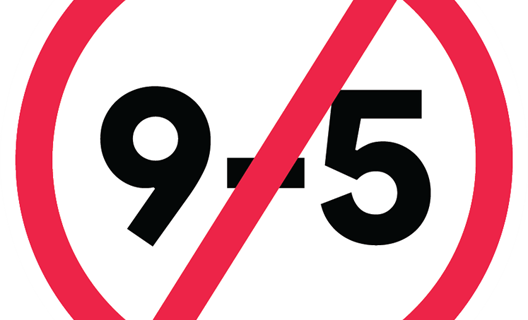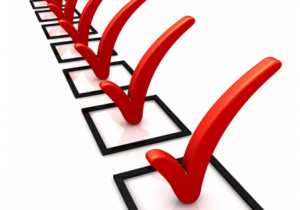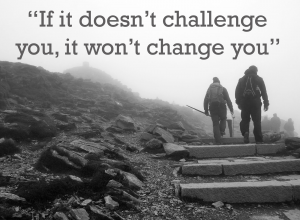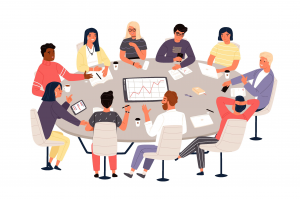How To Attract Gen Z Workers

“She’s quiet quitting and rage applying to lazy-girl jobs.” That sentence may cause many of us to scratch our heads in bewilderment, but to Gen Z workers, it makes perfect sense. And with workplace hashtags like these going viral among Gen Z on TikTok, it makes managers wonder if it’s even possible to make younger workers happy.
So, who exactly is Gen Z? Often defined as people born between 1997-2012, they are more diverse, tolerant, educated and socially conscious than past generations, yet they also report higher levels of stress and mental illness. They’re also one of the largest generations, making up one-fourth of the U.S. population. In fact, they’re about to surpass millennials as the most populous generation on earth and have the potential to transform not just the job recruitment process, but also the industries they’re entering.
The big question is: What is Gen Z looking for in the workplace? Forget the massage chairs and ping pong tables. Gen Z is more focused on meaningful work with an emphasis on work/life balance. Our previous article about workplace TikTok trends is proof of that. Here’s a look at 5 of the top things younger job seekers are looking for at work:
- A competitive salary, but meaningful work is key: With rent, groceries and other essentials at all-time highs, Gen Z places a premium on a good salary. However, while salary is the most important factor in deciding on a job, Gen Z values salary less than every other generation. If given the choice of accepting a better-paying, but boring job versus work that was more interesting but didn’t pay as well, Gen Z was fairly evenly split over the choice.
- A strong benefits package: Along with salary, this is another key to keeping Gen Z employees satisfied at work. Health insurance should be just the start – you should also offer employee retirement plans, commuter benefits, and more. Throw in some free meals or snacks in the workplace and you’re really going to get their attention!
- Reasonable working hours: Gen Z is less willing than millennials to sacrifice work/life balance. Frequently asking this group to work more than their usual hours can be a real motivation killer and lead to workplace burnout. You don’t want a group of “quiet quitters” on your team.
- No micromanagement and toxic work environments: A study by Glassdoor showed Gen Z isn’t too enthusiastic about upper management. That means if you micromanage these workers, you’re likely to chase them out the door. They’re also very conscious of toxic work environments (ie- employees who are too afraid to ask questions, dismissive managers, etc.)
- A flexible work schedule: Even if you can’t keep your team remote all the time, it’s important to give Gen Z the option. For example, you could implement a policy that allows employees to work from home any time they don’t have in-person meetings. That flexibility can go a long way to keep them engaged at work.
Understanding the needs and wants of Gen Z can seem like a big learning curve. However, ignoring their workplace preferences can really put your organization at a disadvantage. As we pointed out, they’re poised to become a large block of the workforce in the coming years. Leah M Joppy and Associates is ready to help you hone your Gen Z recruitment strategy and will look at your current workplace environment, culture and more to make suggestions as to how you can attract younger team members. Call us at 301-670-0051 or email us at leah@lmja.com to learn more.
When A Leader Leaves The Organization
 We’ve probably all experienced the stress of a key leader or team member leaving their position, whether it’s a sudden departure or an impending retirement. It can cause uncertainty within an organization and can really rock the boat. Team members have questions about the future and how changes will affect them and their jobs. And there’s the added challenge of finding the right person to fill a vacant position with the required skills and expertise. What if there was a way to make this type of situation easier to handle? It’s called succession planning and it’s a vital, yet often overlooked, tool in helping your organization run smoothly.
We’ve probably all experienced the stress of a key leader or team member leaving their position, whether it’s a sudden departure or an impending retirement. It can cause uncertainty within an organization and can really rock the boat. Team members have questions about the future and how changes will affect them and their jobs. And there’s the added challenge of finding the right person to fill a vacant position with the required skills and expertise. What if there was a way to make this type of situation easier to handle? It’s called succession planning and it’s a vital, yet often overlooked, tool in helping your organization run smoothly.
What is succession planning? It’s the process of identifying critical positions within your organization and developing an action plan for team members to be ready to fill those positions should they become available. Think of it as an insurance plan that you have the right people in the right jobs when you need them. However, it’s not a one and done kind of task. An effective succession plan should be reevaluated and updated each year or when changes dictate.
There are so many benefits to succession planning, yet many organizations don’t take the time and care required to build an effective plan. However, putting in the effort reaps so many rewards, including the following:
- Helps your organization plan for the future: Change can happen fast and so many organizations are caught off guard when a key team member leaves. With succession planning, leaders continually think about how certain events can affect their department as a whole and it makes them more resilient in the face of unexpected events.
- Assists with knowledge transfer: When a long-time employee retires or leaves for another position, they take their knowledge with them. Succession planning helps to stop this drain on organizations by having future candidates who are ready to take the reins. It opens up the opportunity for mentoring, coaching and education on what it takes to be successful in a future role.
- Promotes training and development: Once your company has identified team members that are interested in moving into senior positions, you can identify any competency gaps and begin preparing them for their eventual roles. This may come in the form of coaching, mentoring, job shadowing or a gradual increase in more advanced responsibilities. Some positions may require certifications or continuing education.
- Helps with long-term talent planning and employee retention: Succession planning improves retention of your top employees by offering them clear opportunities for growth. By planning longer-term, organizations can reduce their reliance on external recruitment and have a pool of experienced employees in-house.
Changes in your team are inevitable. You may not always be able to predict an employee’s departure, but with effective succession planning, you can help achieve continuity and lessen the impact on your organization. Does your department have a succession plan in place? If so, when’s the last time it was updated? Leah M Joppy and Associates can work with your organization to develop an effective succession plan or review your current plan and make suggestions for improvements. We get to know your department and unique needs and walk you through every step of the process (you’ll see a few examples in our next article).
Succession plans are easy to let fall through the cracks, but don’t be caught off-guard if you lose a key member of your team. Contact us at 301-670-0051 or email us at leah@lmja.com to learn more.
Tips For Successful Succession Planning
 An aging workforce, shrinking talent pool and intensified competition for the right team members put so many organizations under increasing pressure. The benefits of succession planning have never been more apparent, yet few organizations have a plan at all, even for senior leadership positions. With the right plan in place, you can rest a little easier knowing that you’re prepared for inevitable personnel changes and won’t be caught off guard.
An aging workforce, shrinking talent pool and intensified competition for the right team members put so many organizations under increasing pressure. The benefits of succession planning have never been more apparent, yet few organizations have a plan at all, even for senior leadership positions. With the right plan in place, you can rest a little easier knowing that you’re prepared for inevitable personnel changes and won’t be caught off guard.
How can your organization get started with succession planning? Here are a few tips for kickstarting an effective plan:
- Identify potential roles to plan for: The first step is to identify the critical positions within your organization. Sometimes these positions are leadership roles or they’re mid-level. You should identify roles where the operation, strategy and decision-making of your organization would be dramatically affected if they were to be suddenly empty.
- Define succession criteria: Criteria includes the skillset, experience and training required for potential successors. Does the role need someone with specific technical expertise? Perhaps you need successors with strong leadership skills or the ability and willingness to develop those skills? These criteria act as your benchmark for evaluating the readiness of candidates to fill your roles.
- Pinpoint succession candidates: Think about which team members could potentially step into the identified positions. Ask yourself: If we were to hire for a position internally, who could possibly step into the role? You want to carefully evaluate employees’ performance, potential and readiness to take on higher-level responsibilities.
- Step up professional development efforts: Now that you’ve identified your talent pool, it’s time to focus on the training to get them to where they need to be. This typically involves creating a personalized development plan for potential successors to enhance their skills and knowledge required for future leadership roles.
- Develop a knowledge transfer process: This opens up opportunities for mentoring and coaching for successors and ensures that specialized knowledge and skills don’t leave when a team member walks out the door. Experienced leaders can guide and support successors in their professional growth, while sharing their knowledge and experiences.
- Review and monitor your plan: Regularly monitoring the progress of the succession plan is vital to its success. This typically involves tracking the development and performance of potential successors, evaluating their readiness for advancement and then making any adjustments to the plan.
- Continually update your plan over time: As we mentioned before, succession planning is not a one and done process. It requires review at least yearly to analyze any areas that need adjustment.
Most of all, it’s vital to be proactive with a plan! Sometimes, you’ll know well in advance if a hard-to-replace team member is going to leave. But other times, you’ll be caught off-guard by a sudden employee departure. That’s why you need a plan now. Leah M Joppy and Associates can help you every step of the way with your succession planning. Drafting a succession plan can feel like a daunting task, but with the right coach working with you through the process, it doesn’t have to be. And the result means you won’t have to deal with the upheaval that can come with personnel changes.
Ready to learn more? Call us at 301-670-0051 or email us at leah@lmja.com.
Handling Increasing Workloads
 Steadily increasing workloads may seem like a harsh reality in today’s workplace. Technology ensures that we’re available 24/7. Working from home can make it hard to unplug and create a work/home balance. Falling into the routine of overwork is easy, but getting yourself out of it can feel like an uphill task. However, it’s not impossible and your mental and physical health may depend on it.
Steadily increasing workloads may seem like a harsh reality in today’s workplace. Technology ensures that we’re available 24/7. Working from home can make it hard to unplug and create a work/home balance. Falling into the routine of overwork is easy, but getting yourself out of it can feel like an uphill task. However, it’s not impossible and your mental and physical health may depend on it.
No one is equipped to go at lightning speed without suffering some mental and/or physical repercussions, whether it’s right now or down the road. We outlined a few symptoms of overwork in our last article. Perhaps you’re dealing with one or more, but feel helpless and wonder if there’s anything you can do about it. Here are 6 suggestions to keep in mind:
- Minimize distractions and identify time-wasters: Suggestions include checking e-mail only a few times a day, staying off social media, using earphones if you work in a loud environment and setting clear boundaries if you work from home with family members in the house.
- Make lists and establish priorities: Write down everything you need to accomplish in a given day and then assign each task a priority. Project managers often use the 4Ds of time management: Do, Delegate, Delay and Drop. Checking off tasks as you complete them can also give a sense of accomplishment. It’s a small, but powerful step!
- Delegate where you can: So many us get in the mindset of, “Oh, it’ll be quicker and easier if I just do it myself.” This is particularly true of new managers. However, if you’re in a position to delegate tasks, do it! There is a limit to what one person can do.
- Sit down and talk with your manager: If you feel comfortable, enlightening your manager about your situation can help you both come up with strategies. But don’t just walk into their office without a plan. Ask yourself if your current workload is acceptable for your role and job description. Come in with your list of priorities to share. And propose a solution you can both discuss.
- Pursue hobbies outside of work: A hobby not only brings fulfillment, but also makes your brain think in different way and takes your mind off your job. If you work remotely, try to pursue a hobby that gets you out of the house.
- Prioritize wellness into your routine: We’re talking exercise, breathing techniques, meditation, anything that helps calm and recharge you.
And remember, you don’t have to go through this alone. Working with a coach, like Leah M Joppy and Associates, can help you chart a clearer path forward. We’ll discuss your unique situation, strategies for dealing with your increasing workload and help you establish possible solutions and clear boundaries. The key is to get ahead of your workload situation before it leads to burnout.
Ready to learn more? Call us at 301-670-0051 or email us at leah@lmja.com.
How Your Organization Can Attract Millennial and Gen Z Employees
 Finding the right employees can be tough, but keeping them can be even tougher. In 2022, 46.2 million workers voluntarily quit their jobs, becoming what’s now known as The Great Resignation. And it’s estimated that 46% of the American workforce wants to switch jobs in 2023, making employee retention a key concern. Now more than ever, organizations need to come up with fresh approaches to retain their current workers. This is especially true of Millennial and Gen Z employees.
Finding the right employees can be tough, but keeping them can be even tougher. In 2022, 46.2 million workers voluntarily quit their jobs, becoming what’s now known as The Great Resignation. And it’s estimated that 46% of the American workforce wants to switch jobs in 2023, making employee retention a key concern. Now more than ever, organizations need to come up with fresh approaches to retain their current workers. This is especially true of Millennial and Gen Z employees.
Let’s take a look at these two groups. Millennials were born between 1981 and 1996 while Gen Z refers to those born between 1997 and 2012. Between the two of them, they make up almost 50% of the workforce today. Gen-Z alone is expected to form 27% of the workforce in the next two years. Both Millennials and Gen Z have a reputation for job hopping and lacking “company loyalty”. However, if organizations make an effort to understand the needs and wants of these two groups and grant them the opportunities to grow and thrive, this reputation isn’t always true.
Your recruitment strategies may have helped you acquire a new crop of employees, but if they are not rewarded appropriately with career opportunities, development and other incentives, there is a larger risk of them leaving. What are some of the top things that Millennials and Gen Z look for in an employer? Here’s a glimpse at 5 of them:
- Offer them flexibility and work-life balance: Some may bristle at the work-from-home or hybrid model, but it’s here to stay. Gen Z and millennial employees value flexible work places and working practices and are interested in jobs that will be adaptable to their lifestyle.
- Place an emphasis on their well-being: Millennials and Gen Z want to work for organizations who take care of them and their health as individuals. And it’s not just about physical well-being, but mental health as well.
- Provide them with strong, transparent managers: Management really matters! Grant these two groups more autonomy and less micromanagement, communicate openly and seek their input and ideas.
- Invest in their growth: Gallup found that 87% of millennials rate development opportunities as important to them in a job and LinkedIn found that 76% of Gen Z say learning is key to their success.
- Provide them with mentors: A study by CNBC found that 90% of employees who have assigned mentors say they are happy in their jobs. And greater employee satisfaction leads to better retention!
In today’s multigenerational workforce, organizations can no longer rely on a one-size-fits-all approach to retaining and motivating employees. The most successful organizations truly understand employees’ expectations in the workplace. Leah M Joppy and Associates can work with your organization to build an effective employee retention strategy and help you create programs, systems and communication styles that they meet different employee needs, whatever generation they are from.
Ready to learn more? Call us at 301-670-0051 or email us at leah@lmja.com.
Top Five Suggestions For Leading An Effective Team
 Today’s leaders often feel like they’re in a never-ending game of tug-of-war. Between dealing with day-to-day obstacles, managing projects and team members, it can be overwhelming. The “people” component is certainly the most integral to an organization and can prove to be the most challenging. Building a high-performing team is more than just putting together a group of talented people with the right skills. It requires careful development of each member’s unique talents and characteristics.
Today’s leaders often feel like they’re in a never-ending game of tug-of-war. Between dealing with day-to-day obstacles, managing projects and team members, it can be overwhelming. The “people” component is certainly the most integral to an organization and can prove to be the most challenging. Building a high-performing team is more than just putting together a group of talented people with the right skills. It requires careful development of each member’s unique talents and characteristics.
There is so much strong leaders can do to build effective, high-performing teams. Here’s a look at the top five suggestions. But remember, it’s a marathon and not a sprint. It’s a continuous process and not a “one and done” task:
- Establish meaning and purpose: It’s a leader’s job to help employees and teams find meaning in their work. To increase productivity and motivation, have discussions about the “why” of your team’s tasks. Team members who are passionate and motivated help drive team effectiveness because they understand how their work contributes to the organization’s overall objectives.
- Define roles and responsibilities: Leaders must ensure that everyone on the team knows exactly what is expected of them. It reduces confusion and conflict and allows teams to work more efficiently. Role clarity also enables leaders to hold team members accountable for their performance and identify areas where someone may struggle.
- Communicate effectively: Effective communication and effective leadership are definitely intertwined and it can make, or break, a team. As a leader, it’s vital to: practice active listening and allow people to give constructive feedback without fear of repercussions; ask questions and don’t be defensive; have an open-door policy; follow through with actions.
- Focus on building relationships: Building relationships helps to create (or reinforce) an organization’s values and culture. Once leaders and team members genuinely trust and respect each other, regular, open dialogue about individual and team performance increases team effectiveness.
- Provide productive, specific and timely feedback: Feedback is critical to improving performance, but how you deliver it can make a big difference. Productive feedback enables team members to see their successes and missteps and grow from the experience.
To build high-performing teams, organizations must cultivate high-performing leaders. People skills typically account for 80 percent of success in a leadership role. Yet many people are promoted into leadership because of their technical capabilities, without mastering the skills of managing and motivating others. Without these basic skills, leaders at every level can struggle with building high-performing teams. Leah M Joppy and Associates understands the challenges that accompany leadership roles and knows the proven techniques for building strong leaders who can build motivated, productive teams.
Ready to learn more? Call us at 301-670-0051 or email us at leah@lmja.com.
The Power of Mental Strength
 Have you ever thought about what makes people excel in a particular area, whether it’s a successful career, playing a musical instrument or running a marathon with an amazing time? Most of us would say it’s a person’s intelligence or natural talent that enables them to achieve such incredible results. However, there may be one important factor that you’re not taking into consideration: mental strength. Mental strength is the capacity of a person to deal effectively with stressors, pressures and challenges and perform to the best of their ability, regardless of their circumstances. Call it grit, resiliency or toughness, it’s the key reason why some people are able to overcome obstacles, while others crumble more easily with the daily challenges and frustrations of life.
Have you ever thought about what makes people excel in a particular area, whether it’s a successful career, playing a musical instrument or running a marathon with an amazing time? Most of us would say it’s a person’s intelligence or natural talent that enables them to achieve such incredible results. However, there may be one important factor that you’re not taking into consideration: mental strength. Mental strength is the capacity of a person to deal effectively with stressors, pressures and challenges and perform to the best of their ability, regardless of their circumstances. Call it grit, resiliency or toughness, it’s the key reason why some people are able to overcome obstacles, while others crumble more easily with the daily challenges and frustrations of life.
You’ve probably seen evidence of this in your own life. Do you remember someone who was an incredible musician, but squandered their talent? How about your high school teammate who consistently worked the hardest and squeezed the most out of their potential? Maybe you were set on accomplishing a goal and were willing to put in the work, no matter how long it took.
So, what does a mentally strong person look like and what makes them tick? In his book “Developing Mental Training,” psychologist Peter Clough, describes four important traits of mental toughness, which he calls the four C’s:
- Control: Control means having a sense of self-worth and describes the extent to which a person feels in control of their life and their circumstances. Mentally strong people also understand what they can control and what they can’t. They can work through emotionally charged situations without seemingly being reactive or derailed. This calm approach often has a positive effect on those around them.
- Commitment: Commitment is all about goal setting and ‘stickability’. It describes the extent to which someone is prepared to set goals and targets and then do what they need to do to achieve them.
- Challenge: Challenge is something that many people are afraid of or try to avoid at all costs. Yet a mentally tough person welcomes a challenge. Whether the outcome is good or bad, challenges often teach us a lesson. Mentally tough people thrive on challenges and see them as an opportunity to learn and grow.
- Confidence: Confidence describes the self-belief a person has in their own abilities and the ability they have to deal with conflict and challenge. When faced with a challenge, mentally tough people believe they can deal with the situation and have the inner strength to stand their ground and deal with objections.
The ability to cope with difficult situations and emotions is a significant predictor of our success and happiness. However, we’re all human and have certainly gone through periods of life where we feel stuck and our resiliency may not be as strong as we want it to be. That’s when working with a coach, like Leah M Joppy and Associates, can be incredibly beneficial. Whether you’re a new or seasoned leader looking to enhance your mental strength or you’re interested in developing these skills in your team, we can work with you through every step of the process. Coaching provides a fresh perspective, goal setting and accountability to achieve consistent and meaningful results.
Contact Leah M Joppy and Associates at 301-670-0051 or email us at leah@lmja.com to learn more and get started.
Techniques for Building Mental Strength
 When life knocks you down, are you quick to pick yourself up, dust yourself off and keep moving forward? Or do you tend to break down and spend lots of time wallowing in self-pity and doubt? There are times in our lives when we feel like we can handle anything and then there are days when the smallest setback seems insurmountable. The difference isn’t our circumstances. It’s our mental strength.
When life knocks you down, are you quick to pick yourself up, dust yourself off and keep moving forward? Or do you tend to break down and spend lots of time wallowing in self-pity and doubt? There are times in our lives when we feel like we can handle anything and then there are days when the smallest setback seems insurmountable. The difference isn’t our circumstances. It’s our mental strength.
As we talked about in our previous article, mental strength is how effectively someone deals with the challenges, pressures and stressors they may face. Some call it grit, others call it resilience or toughness. And fortunately, it’s something that can be worked on and improved with the right techniques. Just as physical strength can be built, mental strength can be also be built with the right habits, consistency, and well, grit. Here are 9 ways to start:
- Don’t shy away from change – as much as many us hate it, change really is the only constant
- Don’t ruminate on the past – focus on what lies ahead
- Focus on what you can control – discerning what you can and can’t control keeps you positive and motivated
- Develop a daily routine – developing consistent habits, no matter how small, can help you make meaningful progress
- Take action – it doesn’t matter how small the steps, action builds confidence and keeps you moving forward
- Don’t focus on your weaknesses – focusing on your strengths helps you grow much faster than trying to improve your weaknesses
- Try to see failure as an opportunity – failure is inevitable, but it doesn’t have to define you and, with the right mindset, can be a catalyst for growth
- Don’t dwell in self-pity – we all know life can be hard sometimes, but dwelling on our circumstances keeps us from emerging from them and moving forward
- Don’t compare yourself to others – define your own version of success that has nothing to do with others’ strengths and accomplishments
And here’s one more – keep your connections strong! No one needs to go it alone. If you feel like you’re struggling with building and maintaining mental strength or you lead a team that could use some help, working with a coach, like Leah M Joppy and Associates, can be incredibly beneficial. Coaching can help you face your fears head on, increase adaptability, build motivation, establish consistent routines and habits and so much more. Building mental strength is not about beating yourself up when you feel like you’re not as productive as you should be or reaching your goals on your self-imposed timeline. Practicing self-compassion is a crucial component and actually helps us build resilience.
Interested in learning more and get started on a path to change? Call us at 301-670-0051 or email us at leah@lmja.com.
Strengthsfinder Assessment Tool
 What management challenges has your organization experienced over the past few years? How have issues changed or developed over the last 12 or 6 months? As more and more employees are returning to the office, you’re probably dealing with a fresh set of challenges and we outlined just a few in our previous article. Last year was a period of office ‘reentry’ and now it’s time to figure out how to juggle in-person team members, hybrid and remote workers while not sacrificing performance. It’s a lot to handle and how do you even begin?
What management challenges has your organization experienced over the past few years? How have issues changed or developed over the last 12 or 6 months? As more and more employees are returning to the office, you’re probably dealing with a fresh set of challenges and we outlined just a few in our previous article. Last year was a period of office ‘reentry’ and now it’s time to figure out how to juggle in-person team members, hybrid and remote workers while not sacrificing performance. It’s a lot to handle and how do you even begin?
Let’s start with a few of the basics. We’ve outlined a few “dos and don’ts” below. Maybe you’re already using some of them or perhaps they’re a good reminder of where you need to improve:
- Do set immediate and clear expectations – and make sure everyone knows what they are!
- Do schedule regular team meetings and make them a priority (no regular cancellations, please). It’s an effective way to acquaint (or reacquaint) yourself with your team’s work and communication style and find areas for improvement.
- Do engage directly with employees as often as possible.
- Don’t just have a communication strategy in place – document it and share it! Everyone needs to be on the same page.
- Don’t just encourage feedback, make it possible. And listen to it!
- Don’t micromanage and make employees feel like they’re not trusted.
- Do have an open-door policy and set aside time for one-on-one conversations.
- Do have regular team building activities that enable in-person, hybrid and remote team members to get to know each other in a fun, casual setting.
- Don’t forget about mental health. Make sure you’re communicating benefits that your organization provides to employees. Listening to team members and working with them to address concerns is one of the most important things you can do.
A proactive approach and implementing improvements not only keeps your organization moving forward, but also shows team members, whether they’re in the office, remote or hybrid, that you’re engaged in their wellbeing. Fortunately, you don’t have to handle it alone. Working with a coach like Leah M Joppy and Associates and utilizing our Strengthsfinder assessment tool is an ideal way to get started. We outlined the benefits of Strengthsfinder in our previous article. The data it provides goes a long way towards leveraging team members’ strengths, addressing team conflicts and improving communication. Want to learn more? Call us at 301-670-0051 or email us at leah@lmja.com.
Challenges In The Workplace – How A Coach Can Help
 Over the past few years, we’ve all had to adjust to the virtual workplace and the challenges that came with it – from being interrupted on Zoom calls from a crying toddler to missing out on casual chit chat with your colleagues as you grab a morning coffee. Or perhaps you were hired during the pandemic and don’t really feel connected to your new team. Now that people are slowly returning to the workplace, many organizations are dealing with a whole new set of challenges. We’ve broken down the top 3 below:
Over the past few years, we’ve all had to adjust to the virtual workplace and the challenges that came with it – from being interrupted on Zoom calls from a crying toddler to missing out on casual chit chat with your colleagues as you grab a morning coffee. Or perhaps you were hired during the pandemic and don’t really feel connected to your new team. Now that people are slowly returning to the workplace, many organizations are dealing with a whole new set of challenges. We’ve broken down the top 3 below:
- Office Etiquette: Let’s face it – we all developed some interesting habits while working at home, whether it’s living in pajamas, pacing around the house while on a phone call or leaving a pile of dirty dishes in the sink to deal with later. Clearly, this isn’t going to fly in a professional environment. Management needs to set guidelines when it comes to office etiquette and clearly communicate areas such as: respecting team members’ personal space, dress code, keeping workspaces clean and being mindful of voice level. Patience needs to be practiced as everyone readjusts to office life. It’s not fun, but managers must be ready to have conversations when/if issues arise.
- Communication: While some team members are returning to the office, many may be on a hybrid work schedule and others may continue working remotely. This can make communication challenging for even the most seasoned managers. Effective communication requires clarity, consistency and careful listening.
- Team Building: Returning to the office can be particularly difficult for employees who were on-boarded during the pandemic. The existing team may wonder, “Who are the new people? What role will they play within the team? What knowledge and skills do they bring to the group? Will they be a team player?” The new employees may feel like they’re truly part of the team and may not feel comfortable speaking up or asking questions.
How Working With a Coach Can Help
It’s easy to say “communicate more with your employees” or “set clear expectations”, but how do you get started when you’re already feeling overwhelmed? That’s where working with a coaching team like Leah M Joppy and Associates can help. Our popular Strengthsfinder assessment tool has helped organizations and team members learn so much about their core competencies, how to use them to their advantage and where to make improvements.
Participants who have taken this assessment develop a clear understanding of how to use their strengths to support and effectively communicate with team members, as well as work together to support agency mission and goals. This tool also identifies complementary strengths that enable team members to support each other in areas where they may not be as efficient. In addition, this self-awareness insight enables participants to:
- Better manage team and customer conflict
- Leverage individual strengths and communication styles to build cross-agency collaborative partnerships
- Maximize creativity
- Increase performance
Imagine what your organization could do armed with this kind of data! Contact Leah M Joppy and Associates at 301-670-0051 or email us at leah@lmja.com to learn more and get started.